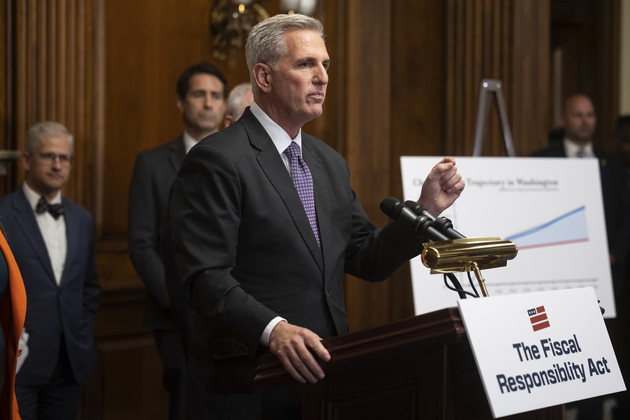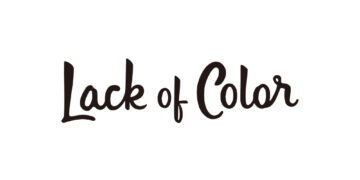In an unprecedented turn of events, the halls of the United States House of Representatives became the battleground for a dramatic standoff as right-wing lawmakers staged a blockade, determined to have their voices heard. The incident, dubbed “Hold The Floor,” unfolded against a backdrop of escalating tensions within the political landscape, highlighting the deep divisions that continue to plague the nation.
The trigger for this extraordinary act of protest was a proposed piece of legislation that sought to address a range of issues, including healthcare reform, immigration policy, and climate change. Frustrated by what they perceived as overreach by the opposing party, right-wing representatives decided to take a bold and unorthodox approach to express their dissent.
The blockade began in the early morning hours, as a group of impassioned conservatives gathered in the chamber, refusing to vacate the premises until their demands were met. It was a stark demonstration of their commitment to their cause and an expression of frustration with what they saw as a lack of meaningful dialogue and compromise within the political sphere.
As news of the blockade spread, the nation watched in a mixture of shock, intrigue, and concern. For some, it was an inspiring act of civil disobedience, reminiscent of historic protests that had brought about significant change. Others, however, viewed it as a dangerous disruption of the democratic process, questioning the wisdom of such a brazen tactic.
The standoff continued for days, with tensions rising both within the chamber and among the American public. Supporters of the blockade praised the representatives for their unwavering dedication to their principles, seeing it as a powerful display of resistance against what they perceived as an encroaching liberal agenda. Critics, on the other hand, argued that such actions only served to further polarize an already deeply divided nation, hindering progress and exacerbating the very issues the lawmakers claimed to be fighting against.
As the days wore on, negotiations between the opposing factions began, with a select group of lawmakers attempting to find common ground. It became clear that a compromise would need to be reached to defuse the situation and restore the functioning of the House. The blockade had achieved its intended goal, garnering widespread attention and forcing both sides to engage in earnest dialogue.
Ultimately, a deal was struck, one that included concessions from both sides of the aisle. The legislation at the heart of the controversy underwent revisions, incorporating input from the conservative representatives who had initiated the blockade. While the final outcome was far from perfect, it was a testament to the power of determined voices and the importance of finding common ground amidst the most contentious debates.
The “Hold The Floor” blockade will undoubtedly go down in history as a defining moment in American politics. It serves as a reminder of the deep ideological rifts that continue to shape the nation, as well as the lengths to which some are willing to go to defend their convictions. Whether one views it as an act of heroism or an affront to democracy, it underscores the urgent need for greater dialogue, understanding, and compromise within the political landscape.
In the aftermath of this extraordinary event, lawmakers from both sides of the aisle have vowed to redouble their efforts to bridge the divide and find common ground. While the road ahead remains challenging, the blockade and its aftermath have reignited a national conversation about the importance of unity and the urgent need to heal the fractures that threaten to tear the country apart.
Only time will tell if the “Hold The Floor” blockade will be remembered as a turning point in American history, or merely a blip on the radar of political turmoil. Regardless, it serves as a stark reminder that the power to effect change lies not only within the halls of Congress but also within the hearts and minds of those who strive for a more perfect union
As the standoff unfolded, the “Hold The Floor” blockade captured the attention of the media and the public alike. News outlets provided round-the-clock coverage, with pundits and experts offering their analyses of the situation. The incident sparked intense debates on social media platforms, further amplifying the already high tensions within the country.
Supporters of the blockade argued that it was a necessary response to what they saw as an erosion of conservative values and a disregard for their constituents’ concerns. They viewed the act of occupying the House chamber as a powerful symbol of resistance, a way to bring attention to the issues they felt were being overlooked or dismissed by the majority.
Opponents of the blockade, however, criticized the right-wing representatives for their disruptive tactics, arguing that it undermined the democratic process and hindered the ability of Congress to fulfill its duties. They contended that such actions set a dangerous precedent, potentially encouraging further obstruction and gridlock in future legislative proceedings.
The standoff also highlighted the broader ideological divisions within the United States. It laid bare the deep-rooted polarization that had plagued the country for years, where political discourse had become increasingly acrimonious and compromise seemed elusive. The “Hold The Floor” blockade became a symbol of the growing frustration and disillusionment felt by many Americans who felt their voices were not being heard.
Amidst the turmoil, there were those who sought to find common ground and bridge the divide. Civil society organizations, advocacy groups, and grassroots movements seized the moment to promote dialogue and understanding between opposing factions. Town hall meetings, public forums, and online platforms became spaces for constructive conversations, aiming to foster empathy and find areas of agreement.
The eventual resolution of the blockade came with a mixture of relief and disappointment for different parties. Some saw the compromised legislation as a step in the right direction, while others felt that it fell short of addressing the fundamental concerns raised by the right-wing representatives. Nonetheless, the incident served as a wake-up call for lawmakers on both sides, forcing them to confront the urgent need for greater collaboration and bipartisan solutions.
In the aftermath of the “Hold The Floor” blockade, efforts were made to rebuild trust and restore a sense of unity within Congress. Bipartisan working groups were formed to tackle the pressing issues that had sparked the standoff, with the aim of finding durable solutions that would reflect the diverse perspectives of the American people.
Ultimately, the legacy of the blockade will be shaped by the actions taken in its wake. If it serves as a catalyst for renewed dialogue, empathy, and compromise, it could mark a turning point in American politics. However, if it becomes a mere footnote in a history of political strife, its impact may be diminished.
The “Hold The Floor” blockade serves as a reminder that the challenges facing the United States are multifaceted and complex. It underscores the need for leaders who are willing to listen, engage in meaningful dialogue, and seek common ground. Only through open and respectful discourse can the nation hope to overcome its divisions and forge a path forward towards a more inclusive and prosperous future.



No Comments
Leave Comment